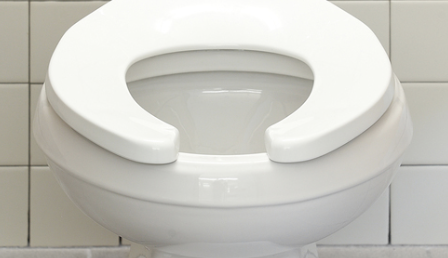
image via – shutterstock.com
Public vs. private toilette seats. What’s the difference? It’s something you have seen countless times before, but probably haven’t thought much about. The fact of the matter is that toilette seats are shaped differently depending on where they are found.
Public restrooms feature horseshoe shaped seats with an open gap in the front. In contrast, private residential seats, like the one in your house, are more oval or rounded in shape. They also lack a front gap and instead wrap completely all the way around.
It’s a subtle, yet glaringly obvious, difference and there are reasons for it. If you haven’t learned anything new today, this should satisfy that gap. The distinctive two-prong open front public toilette seat is required by law and is based on a code that many of the U.S public authorities have adopted and enforced.
The original code was set out in the American Standard National Plumbing Code back in the mid 50s. Since then other professional plumbing associations, like the IAPMO, International Association of Plumbing and Mechanical Officials, have included it in their own uniform plumbing codes.
They set the universal standards for plumbing and when local or state governments adopt the code it becomes enforceable by law. An common example is California’s plumbing code which reads, “All water closet seats, except those within dwelling units, shall be either of the open front type or have an automatic seat cover dispenser.”
In addition to uniform legal standard requirements, the seats also contribute to the general public’s health and wellness. The open front design is there to make it easier for women to wipe. Lynne Simnick, the senior vice president of code development at IAPMO, claims that the front gap is to “allow women to wipe the perineal area after using the toilette without contacting the seat.”
Furthermore, she also says this helps men because it “eliminates an area that could be contaminated with urine…[and] eliminates the user’s genital contact with the seat.” Thus, the gap minimizes the main areas where you’re most likely to come into contact with the seat and makes it possible for men and women to use the toilette in the most hygienic and comfortable way possible.
It’s worth noting that public restrooms that don’t have two-pronged open front seats can still be in compliance with the code if they have automatic seat cover dispensers. If both are lacking, then the restroom you’re in may not be up to code, but it also depends on where it’s located.
Now you know the reason for the difference between public and private toilette seats, so mind the gap!
Please Share This With Your Family and Friends










